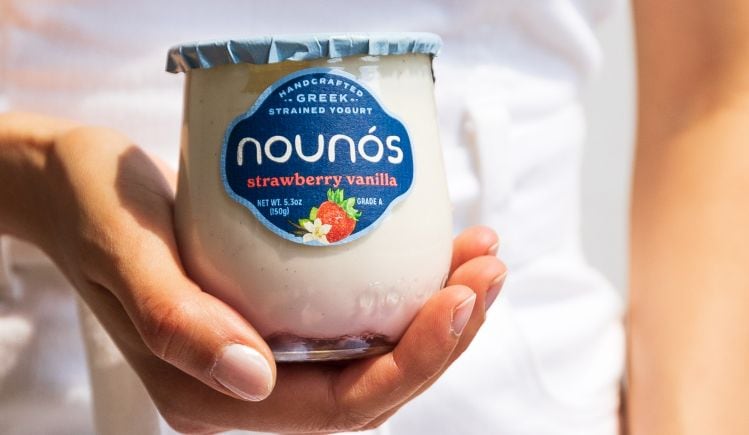“Nobody can make the product the way we do, plus no co-packer wants to take glass, so if you’re packaging in glass, you’re basically making your own product,” observed John Belesis, who co-founded Nounós in 2013 with Steven Ioannou, launched in New York the following year, and then spent the best part of three years trying to persuade the FDA that they belonged on the IMS (interstate milk shippers) list to enable them to ship out of state.
Nounós is available in around 2,500 stores in the natural and specialty channel, and a growing number of restaurants
So why do it? Aside from the warm fuzzy feeling that consumers might get when seeing ‘small batch’ or ‘handcrafted’ products in the dairy aisle, why utilize a traditional bag-straining approach when you can buy a centrifuge or use ultrafiltration to separate off the liquid, like most other commercial-scale operators?
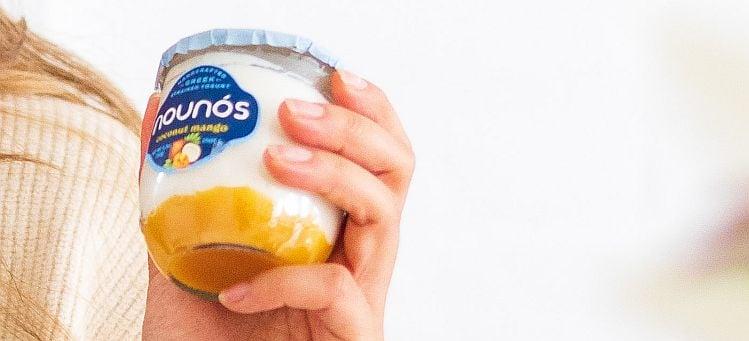
Several reasons, said Belesis: “We felt like what our families were making at home was much better than what was on the shelf, it’s definitely more labor intensive, but it is scalable as long as it's done right and you get this thick, velvety texture that’s very different from the other brands… plus everything tastes much better in glass, although some of that’s probably psychological!
“We have UV lighting, and we take special precautions, because it’s very artisanal compared to what major players are doing.
"They're pressing buttons, our operators are artists using the traditional gravity drainage method [which can be speeded up through cold pressing... the 'Nounós cold pressed method'], which is basically how you would make it at home [to drain out the liquid through a cheesecloth], but on a larger scale.”
‘Our Greek yogurt has a thick, velvety texture that’s very different from the other brands’
By contrast, using a centrifuge, he claimed, “You can’t separate high fat yogurt, so you start out with non-fat or low fat milk and then add cultured cream into the product, so there is a lot of processing involved. With our bag process you can separate a whole-milk or high fat yogurt, there no limit...
“Our fat content is around 3% but we also have a 10% and 5% milk fat product in the foodservice market, so a lot of high-end restaurants in New York use that for dips or desserts with honey and walnuts, and that's something that we're thinking of actually releasing [in retail] as a multi-serve product.”
He added: “The other thing is that if you use a centrifuge, the yogurt gets whipped at a high velocity, so you're actually putting air into the product, plus you’re spinning at a high velocity, which raises the temperature, so you’re potentially killing off some bacteria, whereas we're working at much lower temperatures so we retain a lot more bacteria activity.”
As for ultrafiltration - a pressure-driven membrane-separation process deployed by strained yogurt/skyr brands including Siggi’s and Icelandic Provisions – he said, “It’s faster than what we’re doing, but you’re also potentially killing off a lot of bacteria, as you have to heat the yogurt up before the ultrafiltration and then rapidly cool it down.”
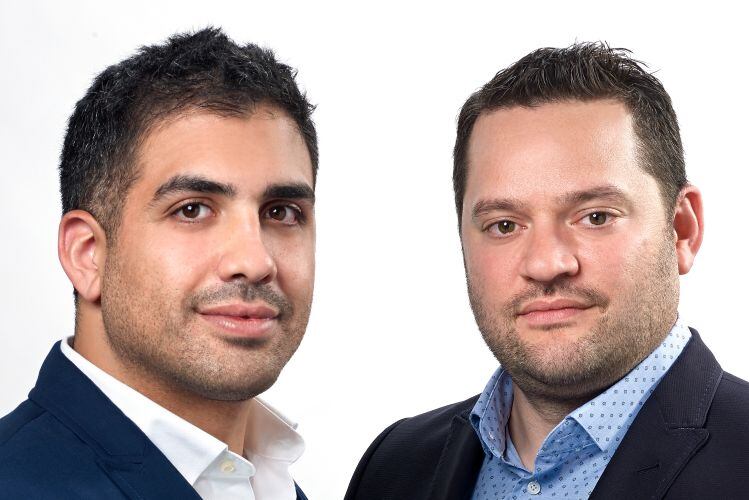
‘Retailers weren’t sure about glass’
As for packaging the yogurt (which typically retails at around $2.49) in glass, he said, “Initially people thought we were crazy, retailers weren’t sure about glass, but it's quite common in Europe, and once people started seeing the Yoplait [Oui] product [which is also packaged in glass] selling like crazy, it actually opened a lot of doors for us.”
There were some frustrations too, he observed, when Yoplait started buying up all the glass jars from the supplier Nounós was using in France, which caused some supply chain challenges.
“The manufacturer ended up helping us bring the glass mold here to the US, and we launched that last year, so we're in a new glass container that’s US-made in Upstate New York.
“The good thing about glass is that it's recyclable, and 70% of our glass containers are made from recycled glass. Customers also like to re-use them for other things.”
While the overall yogurt market slowed down a couple of years back after years of growth, it has picked up again, he noted: “I still see a lot of growth in Greek, especially on the premium side, from brands like us that are doing things a little differently; they will continue to gain momentum.
"We expect to do $10m by the end of next year, and have been growing at a CAGR of 40% since 2015."
Securing FDA approval… ‘We had to send inspectors to Greece and France’
But it hasn’t all been plain sailing, he acknowledged: “For Grade A milk products you have to abide by certain rules covering the plants, the manufacturing process, and the packaging. The problem was, no other manufacturer was making yogurt in this way at scale.
“Basically New York State said to us, we’re okay with it, but the FDA is not going to let you sell yogurt out of state, so we had to get on the IMS [interstate milk shippers] list. The problem was that bag straining was not something they would approve, so we had to send inspectors to Greece to study the bag-straining process and to France for the packaging, as that wasn’t approved either, so it was like we were starting from scratch.
"The approval date was in November 2016, roughly three years after we launched, and we couldn't ship product out of New York until we received that approval."
Supply chain: ‘We still have our own trucks… so if an order doesn't get delivered we can send a truck to the 3PL, pick up the order and deliver it ourselves’
Fast forward to 2021, and like every company in the space, Nounós has experienced some supply chain challenges this year, said Belesis.
“We started buying more and more [packaging] material as we could see the supply chain issues mounting, so we've been keeping stock here at our warehouse. But we also had a lot of issues with freight, so we're making the product and sending it out to our third party logistics company, but [in some cases] they're not actually delivering.
“But as we started from the ground up, we still have our own trucks, so we’re able to pick up a lot of the slack. So if an order doesn't get delivered we can actually send a truck to the 3PL, pick up the order and we can deliver it.”
Funding: Gearing up for series A round
So how has the company been funded?
“Initially, there was a lot of sweat equity that went into it, and we actually did a lot of the construction ourselves,” said Belesis.
“In the beginning we didn't have distributors, so we leased trucks and did the distribution ourselves for the first couple of years. In 2019 were able to get investment from AccelFoods [now AF Ventures] as our lead investor for our seed round and since then we've done one or two rounds of convertible notes, and we're preparing for a Series A sometime next year.”
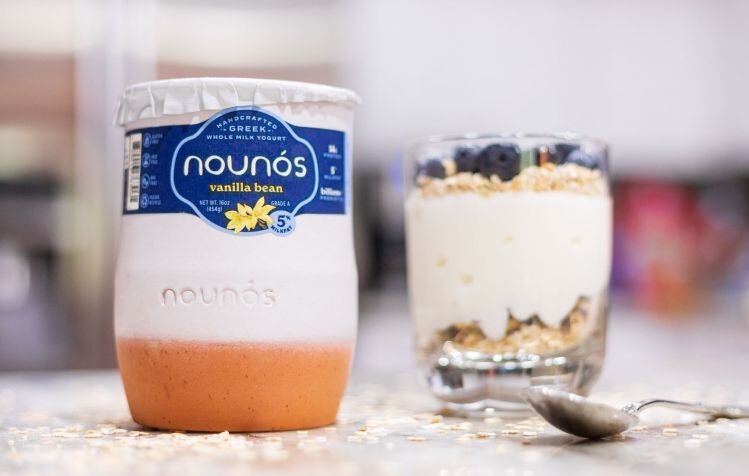
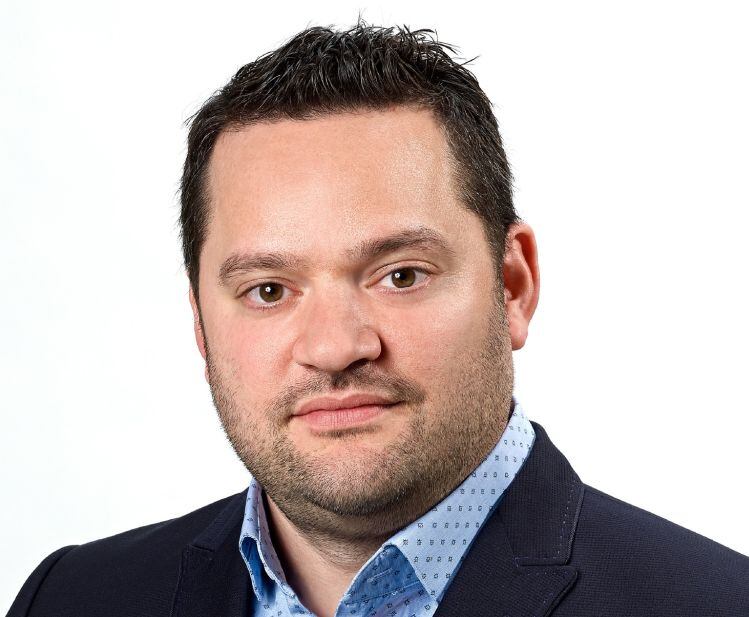
"I was born in the US, but my family and I moved to a suburb of Athens when I was 12 years old," says Belesis.
"My family would purchase sheep’s milk yogurt from the local family creamery called Lakafosis in Drosia, Greece. I’m still friends with the current owner... and have learned a few tricks of the craft from him over the years.
"I basically lived off their yogurt along with Fage growing up. I would eat it for breakfast with a little sprinkle of sugar or I would eat it as a dip with potato chips...this is life changing! Or I'd scoop it with fresh sourdough from the local bakery...
"After I graduated high school in Greece I moved back to the US in 1997 for college. Greek yogurt did not exist in the US at that time, so my family would make it at home using store bought Dannon yogurt as a starter culture and we would strain it using a pillow case at first and then we upgraded to a special cheese cloth.
"A few years later, Titan Foods the famous Greek market in Astoria, Queens, started airmailing Fage Greek yogurt from Greece. We continued to make yogurt at home because we lived a few hours from Astoria. But this time we would use Fage as the starter which made a huge difference." Picture credit: Nounós Creamery

